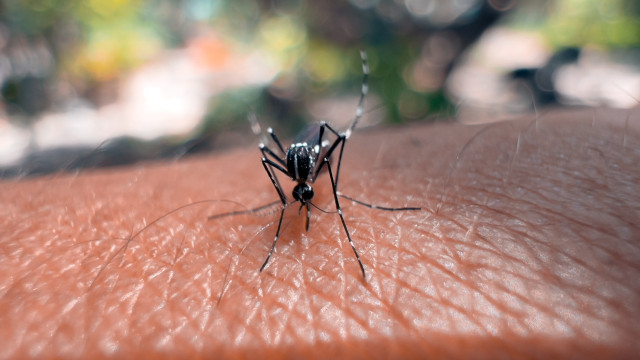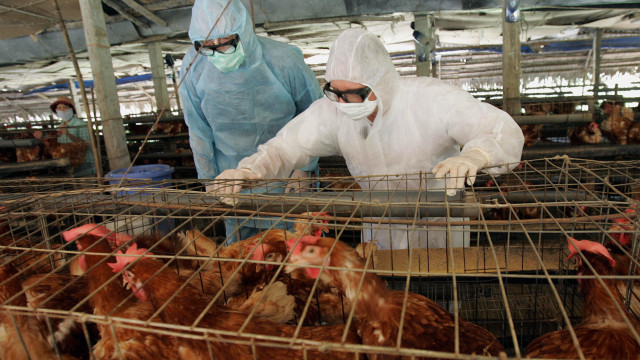




























See Also
See Again
© Getty Images
0 / 29 Fotos
What is glioblastoma?
- Glioblastoma (also known as GBM) is a type of cancerous brain tumor. It’s one of the most common malignant tumors to affect adults.
© Shutterstock
1 / 29 Fotos
What is glioblastoma?
- This type of tumor forms in glial cells called astrocytes, which support nerve cells. GBM grows fast and affects the brain and spinal cord.
© Shutterstock
2 / 29 Fotos
How common is GBM?
- Glioblastoma accounts for a great part of all cancerous brain tumors.
© Shutterstock
3 / 29 Fotos
How common is GBM?
- Every year, more than 13,000 glioblastoma cases are diagnosed in the US alone.
© Shutterstock
4 / 29 Fotos
Who’s at risk?
- While GBM can affect people at any age, it’s more common in older adults between their 40s and 70s. The incidence is higher among men.
© Shutterstock
5 / 29 Fotos
Who’s at risk?
- Those exposed to chemicals such as pesticides, petroleum, vinyl chloride, or synthetic rubber are at a higher risk of developing GBM.
© Shutterstock
6 / 29 Fotos
Who’s at risk?
- Other risk factors include prior exposure to radiation therapy to the head.
© Shutterstock
7 / 29 Fotos
Who’s at risk?
- Some genetic conditions that can lead to tumors may also increase the risk of GBM. These include Turcot syndrome, neurofibromatosis, Lynch syndrome, and Li-Fraumeni syndrome, among others.
© Shutterstock
8 / 29 Fotos
What causes glioblastoma?
- The exact cause of GBM is unknown. This is also true for other types of brain cancer.
© Shutterstock
9 / 29 Fotos
Symptoms
- Symptoms of GBM tend to develop rapidly and may include headaches, seizures, memory problems, as well as changes in personality and behavior.
© Shutterstock
10 / 29 Fotos
Symptoms
- Other glioblastoma symptoms include nausea, vomiting, and confusion.
© Shutterstock
11 / 29 Fotos
Symptoms
- Speech difficulties, as well as vision changes (e.g. blurred vision, double vision, etc.), can also be symptoms of GBM.
© Shutterstock
12 / 29 Fotos
Symptoms
- Balance and coordination may also be affected. Fatigue, muscle weakness, and paralysis, have also been reported as symptoms.
© Shutterstock
13 / 29 Fotos
Symptoms
- Loss of appetite is also a reported symptom in some patients. So are changes in sensation, as well as numbness and tingling.
© Shutterstock
14 / 29 Fotos
Diagnosis
- If there is a suspicion of GBM, a number of tests are often conducted, including imaging tests such as a CT scan or an MRI.
© Shutterstock
15 / 29 Fotos
Diagnosis
- A healthcare provider may also conduct neurological exams. These will access things such as balance, coordination, vision, hearing, as well as reflexes and strength.
© Shutterstock
16 / 29 Fotos
Diagnosis
- Should a tumor be detected, a biopsy is usually performed. This is when a sample of tissue is removed for testing. A biopsy will be able to determine whether the cells in the tumor are cancerous and if they're GBM cells.
© Shutterstock
17 / 29 Fotos
Treatment
- GBMs are considered grade 4 brain tumors, meaning they are very aggressive. Treatment of glioblastoma is not easy as the cells spread rapidly, making a complete removal very difficult. For this reason, treatment often comprises a number of approaches.
© Shutterstock
18 / 29 Fotos
Treatment: surgery
- The first step is usually a craniotomy (brain surgery to remove the tumor). The surgery will help relieve pressure on the brain, but complete removal may not be possible for a number of reasons.
© Shutterstock
19 / 29 Fotos
Treatment: laser therapy
- In cases where traditional surgery is difficult to perform, a less invasive laser interstitial thermal therapy (LITT) may be considered as an alternative.
© Shutterstock
20 / 29 Fotos
Treatment: radiation therapy
- Traditional radiation therapy damages cancer cells. This prevents them from growing.
© Shutterstock
21 / 29 Fotos
Treatment: intensity modulated radiation therapy (IMRT)
- This type of treatment targets the tumor and minimizes the amount of radiation hitting healthy parts of the brain.
© Shutterstock
22 / 29 Fotos
Treatment: stereotactic radiosurgery
- This is a specific type of radiation therapy that works similarly to IMRT in targeting the tumor while reducing damage to healthy tissue.
© Shutterstock
23 / 29 Fotos
Treatment: chemotherapy
- Chemotherapy, a cocktail of drugs that attacks the cancer cells, is a traditionally used cancer treatment, and one that is often employed in cases of GBM.
© Shutterstock
24 / 29 Fotos
Treatment: tumor treating fields (TTF)
- In addition to radio and chemo, patients may also undergo TTF. This is when electric fields are delivered to the brain through a wearable device containing electrodes.
© Shutterstock
25 / 29 Fotos
Outlook
- Being an aggressive type of cancer, patients tend to live sometime between 12 to 18 months after diagnosis.
© Shutterstock
26 / 29 Fotos
Statistics
- According to the European Commission, approximately 15,000 people die every year from glioblastoma in Europe alone.
© Shutterstock
27 / 29 Fotos
Outlook
- Glioblastoma is very difficult to treat, but there is a percentage of people who have lived up to five years after diagnosis. Sources: (Mayo Clinic) (Cleveland Clinic) (American Brain Tumor Association) (European Commission) See also: Have scientists discovered the "holy grail" of cancer drug development?
© Shutterstock
28 / 29 Fotos
© Getty Images
0 / 29 Fotos
What is glioblastoma?
- Glioblastoma (also known as GBM) is a type of cancerous brain tumor. It’s one of the most common malignant tumors to affect adults.
© Shutterstock
1 / 29 Fotos
What is glioblastoma?
- This type of tumor forms in glial cells called astrocytes, which support nerve cells. GBM grows fast and affects the brain and spinal cord.
© Shutterstock
2 / 29 Fotos
How common is GBM?
- Glioblastoma accounts for a great part of all cancerous brain tumors.
© Shutterstock
3 / 29 Fotos
How common is GBM?
- Every year, more than 13,000 glioblastoma cases are diagnosed in the US alone.
© Shutterstock
4 / 29 Fotos
Who’s at risk?
- While GBM can affect people at any age, it’s more common in older adults between their 40s and 70s. The incidence is higher among men.
© Shutterstock
5 / 29 Fotos
Who’s at risk?
- Those exposed to chemicals such as pesticides, petroleum, vinyl chloride, or synthetic rubber are at a higher risk of developing GBM.
© Shutterstock
6 / 29 Fotos
Who’s at risk?
- Other risk factors include prior exposure to radiation therapy to the head.
© Shutterstock
7 / 29 Fotos
Who’s at risk?
- Some genetic conditions that can lead to tumors may also increase the risk of GBM. These include Turcot syndrome, neurofibromatosis, Lynch syndrome, and Li-Fraumeni syndrome, among others.
© Shutterstock
8 / 29 Fotos
What causes glioblastoma?
- The exact cause of GBM is unknown. This is also true for other types of brain cancer.
© Shutterstock
9 / 29 Fotos
Symptoms
- Symptoms of GBM tend to develop rapidly and may include headaches, seizures, memory problems, as well as changes in personality and behavior.
© Shutterstock
10 / 29 Fotos
Symptoms
- Other glioblastoma symptoms include nausea, vomiting, and confusion.
© Shutterstock
11 / 29 Fotos
Symptoms
- Speech difficulties, as well as vision changes (e.g. blurred vision, double vision, etc.), can also be symptoms of GBM.
© Shutterstock
12 / 29 Fotos
Symptoms
- Balance and coordination may also be affected. Fatigue, muscle weakness, and paralysis, have also been reported as symptoms.
© Shutterstock
13 / 29 Fotos
Symptoms
- Loss of appetite is also a reported symptom in some patients. So are changes in sensation, as well as numbness and tingling.
© Shutterstock
14 / 29 Fotos
Diagnosis
- If there is a suspicion of GBM, a number of tests are often conducted, including imaging tests such as a CT scan or an MRI.
© Shutterstock
15 / 29 Fotos
Diagnosis
- A healthcare provider may also conduct neurological exams. These will access things such as balance, coordination, vision, hearing, as well as reflexes and strength.
© Shutterstock
16 / 29 Fotos
Diagnosis
- Should a tumor be detected, a biopsy is usually performed. This is when a sample of tissue is removed for testing. A biopsy will be able to determine whether the cells in the tumor are cancerous and if they're GBM cells.
© Shutterstock
17 / 29 Fotos
Treatment
- GBMs are considered grade 4 brain tumors, meaning they are very aggressive. Treatment of glioblastoma is not easy as the cells spread rapidly, making a complete removal very difficult. For this reason, treatment often comprises a number of approaches.
© Shutterstock
18 / 29 Fotos
Treatment: surgery
- The first step is usually a craniotomy (brain surgery to remove the tumor). The surgery will help relieve pressure on the brain, but complete removal may not be possible for a number of reasons.
© Shutterstock
19 / 29 Fotos
Treatment: laser therapy
- In cases where traditional surgery is difficult to perform, a less invasive laser interstitial thermal therapy (LITT) may be considered as an alternative.
© Shutterstock
20 / 29 Fotos
Treatment: radiation therapy
- Traditional radiation therapy damages cancer cells. This prevents them from growing.
© Shutterstock
21 / 29 Fotos
Treatment: intensity modulated radiation therapy (IMRT)
- This type of treatment targets the tumor and minimizes the amount of radiation hitting healthy parts of the brain.
© Shutterstock
22 / 29 Fotos
Treatment: stereotactic radiosurgery
- This is a specific type of radiation therapy that works similarly to IMRT in targeting the tumor while reducing damage to healthy tissue.
© Shutterstock
23 / 29 Fotos
Treatment: chemotherapy
- Chemotherapy, a cocktail of drugs that attacks the cancer cells, is a traditionally used cancer treatment, and one that is often employed in cases of GBM.
© Shutterstock
24 / 29 Fotos
Treatment: tumor treating fields (TTF)
- In addition to radio and chemo, patients may also undergo TTF. This is when electric fields are delivered to the brain through a wearable device containing electrodes.
© Shutterstock
25 / 29 Fotos
Outlook
- Being an aggressive type of cancer, patients tend to live sometime between 12 to 18 months after diagnosis.
© Shutterstock
26 / 29 Fotos
Statistics
- According to the European Commission, approximately 15,000 people die every year from glioblastoma in Europe alone.
© Shutterstock
27 / 29 Fotos
Outlook
- Glioblastoma is very difficult to treat, but there is a percentage of people who have lived up to five years after diagnosis. Sources: (Mayo Clinic) (Cleveland Clinic) (American Brain Tumor Association) (European Commission) See also: Have scientists discovered the "holy grail" of cancer drug development?
© Shutterstock
28 / 29 Fotos
Glioblastoma: the aggressive brain cancer that kills in record time
What we know about this type of brain tumor
© Getty Images
Brain cancer is one of the deadliest types of cancer. The presence of a malignant brain tumor is often a cause for concern, and while not all types of brain cancer are created equal, glioblastoma is not one with a great chance of survival. But what do we know about this destructive type of brain cancer? Are you at risk?
Click through the following gallery to learn all about glioblastoma, including its symptoms and treatments.
RECOMMENDED FOR YOU




































MOST READ
- Last Hour
- Last Day
- Last Week








